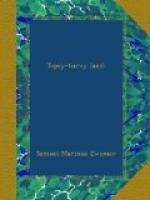Myrrh and frankincense are frequently mentioned together. Both are sweet-smelling gums and both came originally from Arabia. According to a Greek legend, Myrrha was the daughter of one of the kings of Cyprus who angered her father and when he attempted to stab her, fled to Arabia. Here she was changed into a tree called myrrh! A few of these trees are still found in Yemen, but myrrh is not at all as plentiful as it once was in Arabia. It is a low, thorny, ragged-looking tree with bright green leaves. The gum exudes from cracks in the bark near the root of the plant. When dry it is of a rich brown colour and has a bitter taste. The word “myrrh” in Arabic means bitter, and I think that is the origin of the name given to the tree and not the foolish story of the Greek mythology. You must look up all the references in the Bible to myrrh. I wonder whether the myrrh which Nicodemus used to embalm the body of our Saviour for His burial came from Arabia? In Matthew’s gospel we read of the wise men who came from the East to worship Jesus. “And when they had opened their treasures they presented unto Him gifts; gold and frankincense and myrrh.” Do you not think that these wise men came from Arabia, even as the queen of Sheba did, to see the king of the Jews? Perhaps Isaiah prophesied of their coming when he wrote concerning Arabia: “The multitude of camels shall cover thee the dromedaries of Midian and Ephah; all they from Sheba shall come: they shall bring gold and incense; and they shall shew forth the praises of the Lord.” At any rate we are quite sure that the frankincense they brought came from Arabia. There is a great deal in the Bible about this country and there are many beautiful promises for the redemption of its people. Arabs were present at Pentecost and the first missionary to Arabia was the Apostle Paul. God has not forgotten His promises and we must all pray that soon they may be fulfilled. No one has yet been to tell the children of Hadramaut, who gather the incense-gum, the story of Jesus’ birth and of His death on the cross. There is not a single missionary in all that country; no one has been to tell the news that the Babe of Bethlehem is the King of Glory.
“Thou who in a manger
Once hast lowly
lain,
Who dost now in glory
O’er all
kingdoms reign,
Gather in the heathen
Who in lands afar
Ne’er have see the brightness
Of Thy guiding
star.”




